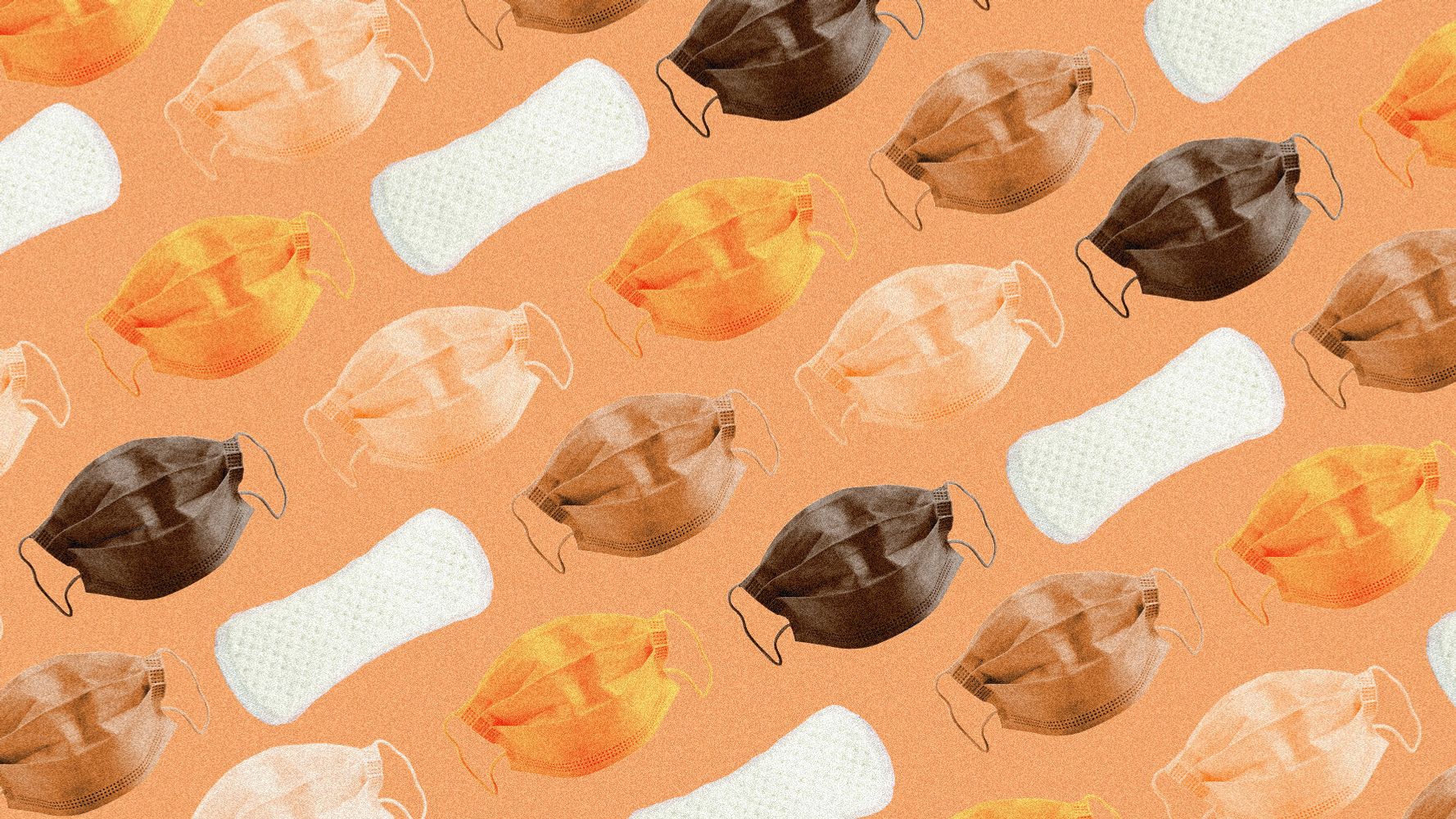Every month since the coronavirus pandemic began, Sydney, a 20-year-old college student in Bloomington, Indiana, has dreaded getting her period.
She lost her job in March and has been relying on financial aid, scholarship money and the income she earns from nannying full time to pay her bills. At the end of the month, that leaves very little cash for items such as tampons, pantyliners and over-the-counter pain relievers for menstrual cramps.
“I know that $30 or $40 a month may not feel like a big deal to most people, but when you are living paycheck-to-paycheck that is a decent chunk of change to have to set aside each month,” said Sydney, who asked to go by only her first name to protect her privacy.
“I have to factor this cost into my already tight budget and I find myself filled with dread when my period comes around and I have to fork up that fee,” she told HuffPost.
Sydney’s experiences aren’t uncommon. Period poverty, or inadequate access to menstrual hygiene tools and education, is a problem across the globe affecting girls, women and nonbinary and transgender people who menstruate.
A 2019 study of low-income U.S. women found that nearly two-thirds of the women surveyed struggled to afford period products, leading many to resort to using paper towels, rags, or even diapers as alternatives.
One in five teenagers have struggled to afford pads and tampons, and one in four have missed class because they did not have access to period products.
In most of the U.S., tampons and pads are subject to sales tax because they’re not classified as products that fill a basic, essential need. Only a handful of states have succeeded in abolishing the so-called “tampon tax.”
The Supplemental Nutrition Assistance Program, or food stamps, does not cover tampons or pads. Neither does Medicaid.
“It’s not like your period is going to be nice and say, ‘Hey, I see you’re unemployed, let’s hold off for a spell.’”
– Dana Marlowe, founder of the national service organization I Support the Girls
The scourge of COVID-19 has only exacerbated the problem. Many public places that supply free tampons and pads in bathrooms― school campuses, rec centers, libraries ― are closed.
One survey found that one in four people between the ages of 13 and 35 reported having a more difficult time managing their periods because of financial strain during the pandemic.
As with toilet paper and medicine, those who could afford to hoard maxi-pads and tampons did just that, leaving women with lower incomes without basic essentials.
Dana Marlowe, founder of the national service organization I Support the Girls, said her group has been flooded with requests for feminine hygiene products. In the spring of 2020, the group experienced a 38% increase in requests for products from both individuals and organizations.
“Our staff received communications from people in March, April, and May saying things like, ‘I can afford to buy products, but the stores don’t have any in stock and I’m getting my period soon. Is there any way to get some from you? I will donate when I can!’” Marlowe told HuffPost.
As more and more women lost their jobs, people who used to be donors began to request products themselves.
One in five women in the U.S. have left the labor force since the beginning of the pandemic; Marlowe is anticipating the high level of need will last at least another 18 months.
“The sudden lack of income has just resulted in an overwhelming number of requests to food banks, day centers, and organizations like us,” Marlowe said. “It’s not like your period is going to be nice and say, ‘Hey, I see you’re unemployed, let’s hold off for a spell.’”
Unfortunately, inadequate access to period products is rarely discussed even in the best of times.
Before period poverty can be addressed in a significant way, people need to be made aware it’s even a problem, said Eiko La Boria, the founder of The Flow Initiative, a non-profit that addresses period poverty and gender equity in Jersey City.
“There are so many women that have never heard of terms like period poverty or menstrual equity, yet once they do, it’s as though a veil is lifted and they become allies, spokespeople, advocates in the fight to end it,” she said. “When we discuss it, we open the door to eradicating the shame and stigma associated with periods and period poverty, which will lead to a more menstrual equitable society.”
Part of the problem may lie in semantics. “Period poverty” can be a marginalizing phrase, which is why many prefer to talk about “menstrual equity,” Among them is Jennifer Weiss-Wolf, a vice president for development at the New York University law school’s Brennan Center for Justice and author of “Periods Gone Public: Taking a Stand for Menstrual Equity.”
“I think it is more accurate to refer to the problem — and the solution — as one of ‘menstrual equity,’” she said. “That means ensuring that menstruation — and the inability to access products, information, education — does not deprive a person of their dignity or ability to participate fully and fairly in daily life.”
The stigma and shame that exists around menstruation have been generations in the making, but the pro-period movement has been gaining traction.
In November, Scotland voted to make period products free, becoming the first country to do so. Slow strides have been made stateside, too.
When then-President Donald Trump signed the Coronavirus Aid, Relief, and Economic Securities (CARES) Act in March, a long-sought reform was ushered in: the designation of menstrual products as a qualified medical expense under the IRS tax code.
As a result, pads, tampons, cups and other similar products are now eligible for inclusion in health savings and flexible spending account allowances. (HSAs and FSAs give employees the option to set aside pre-tax earnings to pay for qualified medical expenses ranging from doctor visits to co-pays to sunscreen.) Menstrual products had been ruled ineligible by the IRS because they did not “alleviate or aid in the treatment plan of a specific illness.”
In May, Rep. Grace Meng (D-N.Y.) introduced the Good Samaritan Menstrual Products Act, which would allow for more menstrual products to be donated to and distributed by nonprofit organizations during the pandemic.
“Menstrual equity is not a choice or a luxury,” Meng said. “It is a human right and a health right. Furthermore, in the current fight against COVID-19, periods do not wait for pandemics.”
Outside of legislative efforts, food banks, day centers and local organizations are working overtime to get women the period products they need.
As Weiss-Wolf pointed out, hundreds of food hubs in New York City have been distributing menstrual products, thanks to the quick, creative advocacy of two public school students who called upon the City Council to do so.
In California’s Ventura County, high school students started Periods with Pride, a grassroots organization dedicated to providing menstrual products for people in need.
The group hosts local drives where they hand out products, said Sanjana Chandrasekar, a junior at Westlake High School and the program’s youth and community outreach director. “Even one pad or tampon box can make a huge difference,” she said.
In Philadelphia, a mother-daughter team launched No More Secrets, an organization that makes door-to-door delivery of pads and tampons every day of the year throughout the city.
Weiss-Wolf is heartened to see local nonprofits meet the moment with such distribution efforts, but said she hopes to see the day when they won’t be shouldering so much of the burden.
“These groups are finding creative workarounds to fill the gap, but only when we make menstrual equity a full-throated policy priority will we achieve the systemic changes that are needed,” she said.


